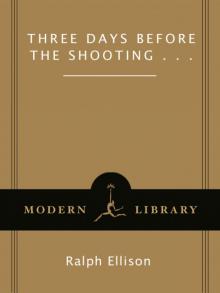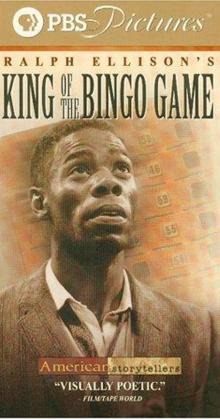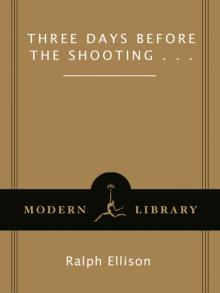- Home
- Ralph Ellison
Three Days Before the Shooting ... Page 2
Three Days Before the Shooting ... Read online
Page 2
With all the mystery that has surrounded the second novel over the years, it seems only natural that public discussion has centered almost exclusively upon why Ellison never published the book. Speculation was generated by a handful of published excerpts and the increasing secrecy with which Ellison guarded the novel from his closest friends and even from his editor. Nonetheless, in the face of so much evidence of literary activity, a new question looms: What is it about this material—either in its focus, form, or theme—that kept Ellison writing so much for so long?
Over the decades Ellison’s various iterations of his characters, plot, and themes testify to an artist in the process of stylistic evolution. Uncoiled, the serpentine fragments of the surviving, unfinished work show a writer responding to an America evolving from Jim Crow to Civil Rights to Vietnam to the Digital Age during the span of the novel’s composition. The basic plot of his novel as it emerges in these manuscripts centers upon the connection, estrangement, and reconciliation of two characters. The one is a black jazzman-turned-preacher named Alonzo Hickman, the other a racist “white” New England Senator named Adam Sunraider, formerly known as Bliss—a child of indeterminate race whom Hickman had raised from infancy to adolescence. The action of the novel concerns Hickman’s efforts to stave off Sunraider’s assassination at the hands of the Senator’s own estranged son, a young man named Severen. We follow Hickman from his home in Georgia to the Oklahoma City of his jazz-playing youth to the nation’s capital, in search of clues that will not only save the Senator but also perhaps unlock the mystery of the child Bliss’s disappearance decades before and his reemergence as the race-baiting Sunraider, a political archenemy of the very people who raised him and continue to love him.
Along the way Hickman reconnects with his old flame, Janey Glover; meets Love New, a half-black, half-Cherokee medicine man who weaves a mysterious fable for Hickman of fathers and sons; and encounters Cliofus, a “teller of tall tales” with the gift of gab who regales a crowd of onlookers at a bar called the Cave of the Winds. Those familiar with the excerpts from the novel published in Ellison’s lifetime will celebrate the return of familiar characters like LeeWillie Minifees, the black jazzman who burns his own Cadillac on Senator Sunraider’s lawn in an act of defiance and protest, and Welborn McIntyre, the white newspaper reporter in whose voice Ellison wrote the only first-person narration in the entire novel. These are only some of the voices and perspectives that emerge in the parts of the manuscripts that have never been in print before. Ellison was writing a novel concerning betrayal and redemption, love and loss, black and white, fathers and sons. It is a novel that takes as its theme the very nature of America’s democratic promise to make the nation’s practice live up to its principles in the lives of its citizens, regardless of race, place, or circumstance.
Juneteenth, published posthumously in 1999, may offer clues about Ellison’s difficulty in striking a balance between the centripetal and centrifugal tendencies of his second novel. The proposition driving Juneteenth is that the center of Ellison’s saga consists of the story of Reverend Hickman and Senator Sunraider from the Senator’s birth as Bliss to his death. Accordingly, Book II, with its central focus on the Senator in the present of the assassination and the past of his boyhood ministry as Reverend Hickman’s messenger, is the chief source of Juneteenth. A long separate manuscript, titled “Bliss’s Birth,” also uses the occasion of the boy’s coming into the world, literally midwifed by Hickman, to fill in much of Hickman’s past as triggered by the then jazzman’s reflections on his and his family’s situation in the Jim Crow South of the early twentieth century.
Even a casual comparison between Juneteenth and the present volume illustrates the centripetal/centrifugal tugs challenging Ellison’s sense of form, subject, and focus to the uttermost. Book I belongs to the white reporter, Welborn McIntyre. He is witness to the shooting, to Reverend Hickman’s presence, and to the subplots of LeeWillie Minifees burning his Cadillac and Jessie Rockmore’s death or murder. Narrator McIntyre also puts his own identity and story front and center for long passages of his narrative. His crucial brief encounters with Hickman are dramatized in Book I, and referred to later in Book II. Then there is the long Oklahoma section, originally also narrated by McIntyre, who goes West to unravel the mysteries of the Senator’s assassination and his assassin’s identity. Later, revising on the computer, Ellison sends Hickman, not McIntyre, to Oklahoma and recounts his adventures in the third person, not the first.
Each of these narrative excursions flies off from the central platform of the Hickman–Bliss/Sunraider story and relationship, which is more central to Book II and to Juneteenth than to the entirety of the unfinished second novel Ralph Ellison left behind. Thus, readers of this volume are now able to select for themselves what they judge to be the true center of this projected work, or whether, as its form stands, there is such a center at all.
Because Ralph Ellison and his wife, Fanny, kept meticulous track of all the paper and documents pertaining to Ralph’s writing and writer’s life, it is possible to follow the trajectory of his work on the second novel. Almost as important, it is also possible to place the periods of hiatus in Ellison’s concentration on the novel between Invisible Man’s publication and the last changes he makes to his computer files just months before his death.
II
AN IMPORTANT EARLY REFERENCE to the second novel comes in a letter to Ellison’s friend and fellow writer Albert Murray on June 6, 1951. As he goes over proofs of Invisible Man, Ellison writes the following to Murray: “So I’m trying to get going on my next book before this one is finished, then if it’s [Invisible Man] a dud I’ll be too busy to worry about it” (Trading Twelves, 21). This comment, however, reveals more about the anxiety Ellison harbored about Invisible Man than it does about an actual second novel. In April of 1953, still busy touring for Invisible Man, he writes to Murray again of his “plan to scout the southwest. I’ve got to get real mad again, and talk with the old folks a bit. I’ve got one Okla. book in me I do believe” (Trading Twelves, 44). By 1954 he has begun drafting in earnest, and in April of 1955 he sends Murray a “working draft” of an Oklahoma episode from that Oklahoma book referred to two years before. Interestingly, Ellison’s own riff on these pages sheds light on his compositional habits during the next forty years of labor on the novel he apparently never finished even in his mind. “Here are a few riffs from old Cliofus,” Ellison writes. “This chok-drinking Charlie character appeared just as I was typing up this copy to send you, I don’t see where the hell Cliofus got him but here he is anyway. As you see, the stuff is still crude—which means it’s still building” (Trading Twelves, 83–84).
Several things stand out about the early draft and Ellison’s comments on its composition. First, the Cliofus–Choc Charlie material turns up again in Ellison’s last revised computer sequence of what is published here as “Hickman in Georgia & Oklahoma.” Second, the riff is still a riff; Ellison’s multiple revisions are fine-tunings, not changes that alter or deepen the implications of the original 1955 draft. The episode, along with many others in the computer-generated material, pays homage to Ellison’s memories of Oklahoma and his attachment to the picaresque. Finally, Ellison’s conviction that the stuff is “still building” kept him writing offshoots of old episodes and revisions of the same scenes many times, all the while knowing, as he told John Hersey in 1982, that he “was never satisfied with how the parts connected” (CE, 819).
As a fellow at the American Academy in Rome from 1955 to 1957, Ellison began plotting out the novel in earnest. From this point in the process, his comments to Hersey in “A Completion of Personality,” interviews begun in 1974 and completed after an eight-year break, in 1982 (published in The Collected Essays of Ralph Ellison), are among the fullest that exist about the sequence of his composition on the unfinished novel. In these remarks one sees the vividness of the “parts” in Ellison’s mind without that sense of connection and connective narrative tissue miss
ing from the totality of what he left behind. As James Alan McPherson put the matter in a 1970 article in the Atlantic called “Indivisible Man,” after Ellison showed him the manuscripts and discussed the novel-in-progress then read from its pages: “He has enough manuscripts to publish three novels, but is worried over how the work will hold up as a total structure. He does not want to publish three separate books, but then he does not want to compromise on anything essential. ‘If I find that it is better to make it a three-section book, to issue it in three volumes, I would do it as long as I thought that each volume had a compelling interest in itself’ “(CE, 391, italics added).
The evidence points in the direction of Ellison aiming for the above-mentioned “three separate books”—Books I and II and the Oklahoma material—corresponding in this Modern Library volume to the drafts Ellison composed on the computer starting in 1982 but existent in 1969 and 1970 in typescript.
It is difficult to date Ellison’s composition of Books I and II and the early drafts of the Oklahoma episodes precisely. Nevertheless it is clear that much of the Oklahoma material was first drafted in the 1950s along with some of Book I (the prologue, certainly) and much of Book II (Saul Bellow describes reading some two hundred pages of Book II in 1959), and that work on Books I and II went on through the 1960s and beyond. (The last manuscript of “Bliss’s Birth,” which Ellison intended to place somewhere in Book II, and which became the penultimate chapter in the posthumous Juneteenth, is dated 1965 in the writer’s hand.)
Of the eight excerpts that Ellison published during his lifetime, “And Hickman Arrives” is probably most important in terms of establishing a reliable trajectory of composition. It begins with the prologue to Book I, follows up with a manuscript not in Book I or Book II (included in Juneteenth as Chapter 3), and carries on with excerpts from the almost two hundred pages of Ellison’s unfinished draft of Book II climaxing with Bliss being violently claimed by a deranged white woman during a Juneteenth night celebration. Ellison wrote Murray in 1959 that he was working hard stitching this excerpt together from what he had written of Book II. He knew it would be the lead piece in the inaugural issue of Saul Bellow’s magazine, Noble Savage. Ellison’s attempt to showcase the new novel and whet readers’ appetites for more was a huge success. In 1960 the literary world had a long and impressive excerpt to tide it over as it awaited the published novel.
No novel ensued. Instead, Ellison reversed the usual order of things. He published Shadow and Act, his influential, brilliantly sequenced collection of essays, in 1964, before rather than after the second novel. Moreover, this decision involved switching gears drastically; it committed him to slow work on the novel in favor of editing the essays, reviews, and interviews done over the previous twenty-five years. After publication he shouldered a taxing schedule of appearances to promote Shadow and Act, and for several years kept up a steady round of lectures on college campuses less than friendly to his integrationist position.
Then, not six months after the Ellisons took up residence at their summer place in Plainfield, Massachusetts, a fire swept through the house, and some of his manuscript was lost. The evidence suggests that the fire took less of a toll on the actual manuscript than it may have taken upon Ellison’s morale and confidence as the years went by. In any case, the myth that slowly magnified the extent of the loss is belied by the evidence of Ellison’s letters and remarks at the time. Ten days after the fire, he wrote Charles Valentine, “The loss was particularly severe for me, as a section of my work-in-progress was destroyed with it.” Later in the letter Ellison outlined the task he saw before him. “Fortunately, much of my summer’s work on the new novel is still in my mind and if my imagination can feed it I’ll be all right, but I must work quickly.” Five weeks after the event he wrote his friend Jack Ludwig, coeditor of Noble Savage: “I lost part of my manuscript—the revisions over which I had labored [in] the summer and valuable notebooks. But since returning to N. Y. I’ve been hard at work and am gradually reconstructing.” Moreover, in March Fanny Ellison assured an acquaintance that Ralph would deliver the manuscript to Random House “early next year.”
It is difficult to imagine Ellison not having substantial recall over the direction he had set for the novel in the several months before the fire. There is no reason to doubt his claim that he set to work “reconstructing” immediately, as his first priority. In this connection the most finished surviving manuscript of Book II suggests that Ellison was unsure which narrative fork to take at the turning point where Book II intersects with an episode in Book I. The scene in question takes place at Jessie Rockmore’s townhouse, where Reverend Hickman and Deacon Wilhite pass the reporter McIntyre, shortly after Rockmore dies, possibly from shock over his visitation from Senator Sunraider. In any case, although Ellison continued to revise what he had drafted of Book II, it is not at all clear that he took the action further, let alone resolved on an ending. Still, as a way of boosting his own confidence and reassuring his readership that the long-delayed, long-promised novel was moving toward completion, he published “Night-Talk” in 1969 along with a prefatory note, which illuminates the personal and narrative relationship between Reverend Hickman and Bliss/Sunraider.
Like “And Hickman Arrives” nine years earlier, “Night-Talk” sets the table for the novel as a whole. Ellison’s abiding American themes of “our orphan’s loneliness” and the consequences of “the evasion of identity” are stated in the note and sounded dramatically in the memories coursing through the minds of Bliss/Sunraider and Hickman. Nonetheless, if publication held off the dogs without, it’s doubtful Ellison’s demons of self-doubt were long assuaged, though he tried to do so by crafting brilliant essays, pieces that mined the same themes of American complexity and restlessness so strongly present in what he had done so far with the second novel.
By the late 1970s Ellison’s novel seems to have taken on the aspect of myth in his mind. In a striking note written on the back of an envelope postmarked March 24, 1977, Ellison scrawled the following words by way of summing up his work.
Looking back it seems that three people were involved. A woman, a politician and a preacher. And yet that leaves out many others, and especially the young man who brought down the intricate structure of time and emotion, the joker, the wild card. The unexpected emotional agent of chaos. But even so, this leaves out another woman, long dead, and by her own hand, and the earlier metamorphosis of the man who was responsible and who later paid for his willfulness with his life and who thus was exposed for what he was and for who and what he had been.
Ellison’s language is insular, almost cryptic, testifying to an author who has lived with his characters for years and was “looking back” as if on a distant memory rather than on a novel-in-progress. The woman, one assumes, is Janey; the politician, Sunraider; and the preacher, Hickman. The young man, the “unexpected emotional agent of chaos,” is Severen, Bliss/ Sunraider’s son and would-be assassin. The other woman, “long dead,” is Severen’s mother and Sunraider’s lover, Lavatrice, a young Oklahoma woman of mixed race who commits suicide soon after giving birth to his child, and leaving the infant in Janey’s care. The “earlier metamorphosis of the man who was responsible” is Sunraider himself, then known simply as “Mister Movie-man,” an itinerant flimflam man posing as a filmmaker who descends upon the small Oklahoma town with his partners to take what he can from the community. This is Ellison’s fiction, the product of his imagination, and yet the years have conspired to create a veil of distance that has him looking upon his own creations with a mixture of reverence and remove.
Just a few years later, in June of 1983, Ellison wrote to his old friend Kenneth Burke, the source of Ellison’s favored theory of narratology—Burke’s tragic progression from purpose to passion to perception. “You’re probably right about a sequel to I.M. being impossible, but even if it weren’t I’d have no desire to undertake it. I’m having enough trouble just making a meaningful form out of my yarn concerning a little boy preach
er who rises to high estate and comes asunder. There are all kinds of interesting incidents in it, but if they don’t add up it’ll fall as rain into the ocean of meaningless words.”
The longer one puzzles over what Ellison left behind, the more maddening it seems that he did not simply will himself to bring the book to a close, that he didn’t find his way to that “meaningful form” he sought. Is it surprising that he did not take stock of what he had of Book I, Book II, and the latest of the Oklahoma drafts? Yes and no. In its earlier drafts, Invisible Man was picaresque in the extreme. As Ellison wrote in his 1961 note explaining why he was bringing to publication the Mary Rambo chapter he sacrificed from an earlier draft, “… I have the feeling that it stands on its own if only as one of those pieces of writing which consists mainly of one damned thing after another sheerly happening” (Rampersad, 393, 607). The note ends with a curious statement for a writer whose creed was “a very stern discipline”: “For me, of course, the narrative is the meaning.”
It would be easy to brush off such a statement if made by Ellison at the beginning or midpoint in the composition of Invisible Man. Made by the novelist whose revisions tightened and telescoped his first novel into a classic, the words suggest something going on deep down “on the lower frequencies” of form and composition. In “Society, Morality and the Novel,” written in Rome when Ellison was hatching the plot of the second novel, he declared critics “more ‘adult’ types” than novelists, whom he associated with playfulness and play. Here Ellison is embracing with a touch of defiance the improvisatory quality of African American culture. Whatever the tendrils, at the root Ellison seems to have resisted bringing order to bear on a reality he saw as “mainly one damned thing after another sheerly happening.” Yet it should be noted that Invisible Man, in narration and story, was perfectly positioned to allow Ellison to enact both form and chaos. Whenever he found the going uncertain or far-fetched, he could retreat to his protagonist-narrator’s voice and let him tell his story, write his memoir. In the second novel the form is mixed. It begins with a prologue told in a biblically accented third person, very much the voice of a chronicle. From there, Ellison turns over all fifteen chapters of Book I to the first-person voice of Welborn McIntyre, the Kentucky-born and - bred reporter, whose former ambition to be a novelist shows in his self-conscious style and urge to make stories out of anecdotes.

 Juneteenth
Juneteenth Invisible Man
Invisible Man Three Days Before the Shooting . . .
Three Days Before the Shooting . . . Flying Home and Other Stories
Flying Home and Other Stories King of the Bingo Game
King of the Bingo Game Flying Home
Flying Home Three Days Before the Shooting ...
Three Days Before the Shooting ...